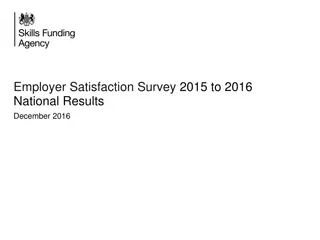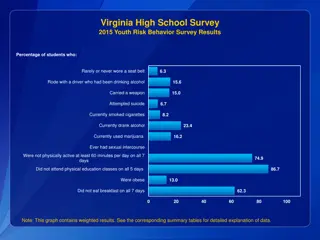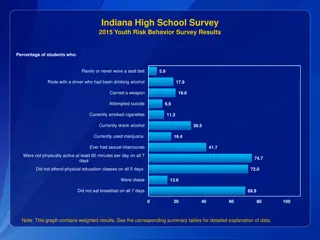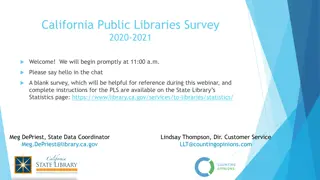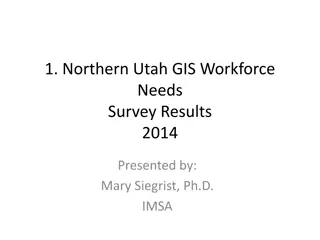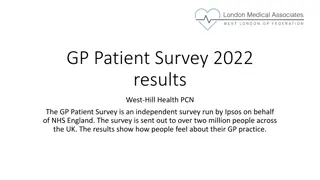
Survey Results and Recommendations for Wind Power Performance Analysis
Explore detailed survey results from the PCWG 2015 Roadmap, highlighting key challenges with wind power performance variations, turbulence effects, and software benchmark adherence. Recommendations are made to address discrepancies and improve lender confidence in pre-construction analysis methods.
Download Presentation

Please find below an Image/Link to download the presentation.
The content on the website is provided AS IS for your information and personal use only. It may not be sold, licensed, or shared on other websites without obtaining consent from the author. If you encounter any issues during the download, it is possible that the publisher has removed the file from their server.
You are allowed to download the files provided on this website for personal or commercial use, subject to the condition that they are used lawfully. All files are the property of their respective owners.
The content on the website is provided AS IS for your information and personal use only. It may not be sold, licensed, or shared on other websites without obtaining consent from the author.
E N D
Presentation Transcript
PCWG 2015 Roadmap: Detailed Survey Results PCWG 9th Meeting December 2014 - Glasgow
Comment from participant: Real world power performance is consistently seen to vary from performance levels quoted by OEMs. A common cause for this is on-site wind flow conditions varying from those for which the sales/warranted power curve was calculated. Consultants have largely acknowledged this fact, and there are currently a range of power curve performance adjustment methods in use. These are largely proprietary and based on measured performance data. The range of methods applied and range of resulting performance adjustments may decrease lender confidence in pre-construction analysis methods, and should be addressed, with the co-operation of the OEMs.
Comment from participant: I think, it is not validated well whether the turbulence renormalisation + the rotor equivalent wind speed (including consideration of the tilt angle of the airflow) are really insufficient to explain observed turbulence effects on power curve low wind speeds. Of course, these methods represent approximations. It should be investigated whether these approximations together with there uncertainties are sufficient to treat the site (or climate) dependency of power curves.
Wind Speed [m/s] TI [%] 4 5 6 7 8 9 10 11 12 13 14 15 16 17 18 19 20 21 22 23 24 29% 27% 2 1 25% 23% 21% 19% 17% 15% 13% 11% 9% 7% 4 3 5% 3% 1%
Note: this statement is not intended to imply that a single software should be used in favour to all others, but rather that one or many software should exists which adhere to standard benchmarks.
Comment from participant: Data sharing may be the key to development of a robust turbine performance model. Through the PCWG, a huge amount of experience and analysis power can be brought to bear on the issue of real world power performance.










